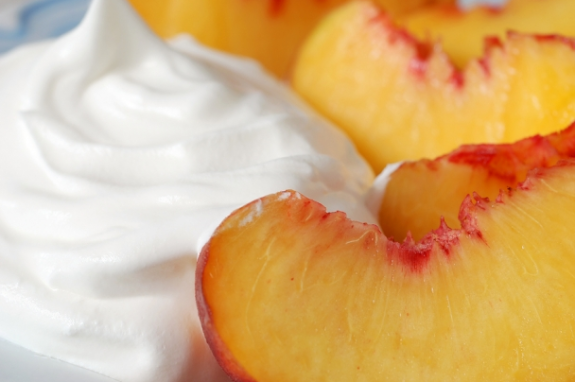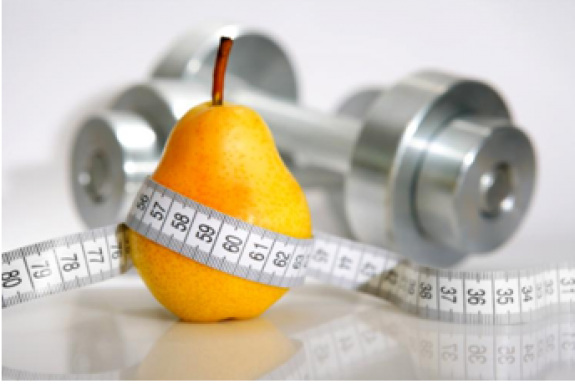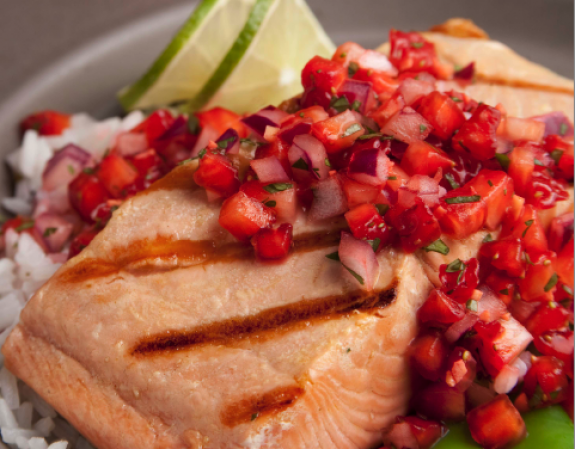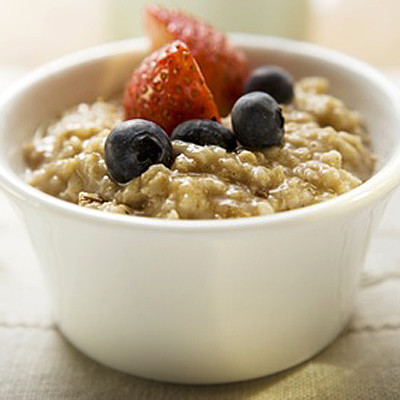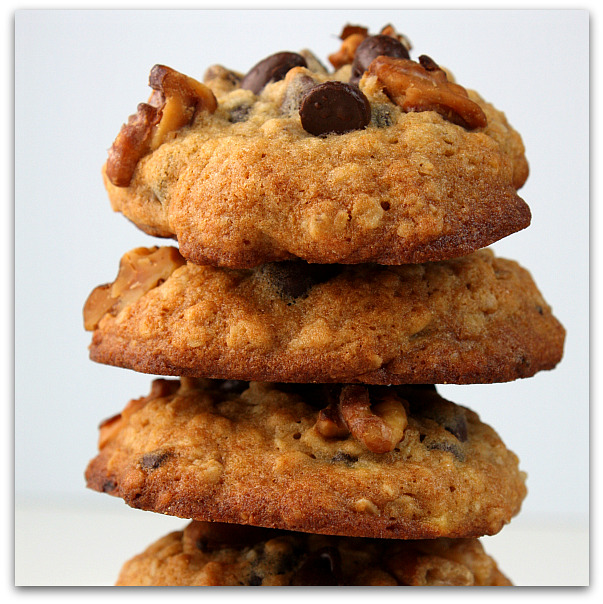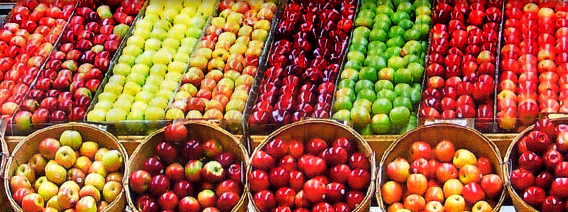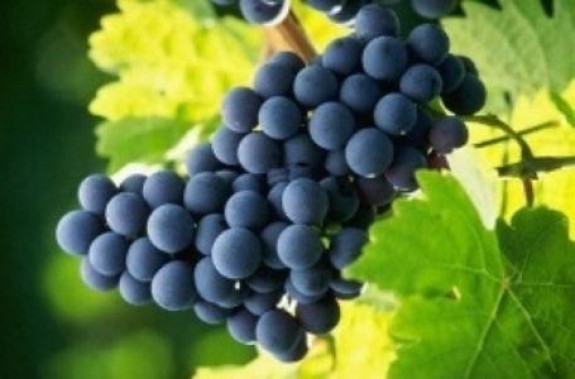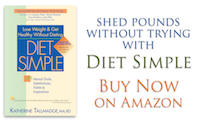Cured Red Meats Increase Risk of Many Cancers
- At July 07, 2016
- By Katherine
- In Articles, News
 0
0
You might want to cut back on the cold cuts, bacon and other processed meats. The World Health Organization is out with a new report that says cured meats and red meat increase the risk of colon and stomach cancer.
A group of 22 scientists from the IARC,The WHO’s International Agency for Research on Cancer in Lyon, France, evaluated more than 800 studies from several continents about meat and cancer. The studies looked at more than a dozen types of cancer in populations with diverse diets over the past 20 years.
Based on that analysis, the IARC classified processed meat as “carcinogenic to humans,” noting links in particular to colon cancer. It said red meat contains some important nutrients, but still labeled it “probably carcinogenic,” with links to colon, prostate and pancreatic cancers.
A Creamy Peach & Ginger Surprise
Fresh, juicy peaches are in season and I have a new peach recipe you’ll love. Surprise: It’s made with Greek Yogurt (though it tastes like cream). Try it and your taste buds will zing! This amazing recipe was developed by the CHOBANI Company’s French-trained chefs, and I got a chance to watch a demonstration with a tasting. This is a lovely dessert containing all the health benefits of yogurt and peaches! Your family and guests will be delighted!
CHOBANI
Peach + Ginger
Yields four, 4 oz servings
INGREDIENTS
2 cups Chobani Non-Fat Plain Greek Yogurt
2 tsp. candied ginger, small dice 4 tbsp. toasted almonds, sliced
2 tsp. fresh thyme, picked
2 tbsp. honey
1 cup Peach and Ginger Compote
PEACH AND GINGER COMPOTE INGREDIENTS
4 yellow peaches, peeled, cored, small dice
1 tbsp. fresh ginger, minced
1 teaspoon lemon juice
1/2 cup sugar
METHOD
- Cook peaches, ginger, lemon juice, and sugar for 20 minutes or until tender. Let cool completely.
- Scoop 1/2 cup of yogurt into each of 4 bowls. Top each bowl of yogurt with 1/4 cup peach
and ginger compote, 1/2 tsp candied ginger, 1 tbsp toasted almonds and drizzle with 1/2 tbsp of honey. Garnish with thyme.110 calories per serving, 0 Fat, 5 mg cholesterol, 35 mg sodium, 17 g carbohydrate, 1 g fiber, 8 grams protein
What is a “Healthy” or “Natural” Food? Katherine Explains on NBC News
- At June 16, 2016
- By Katherine
- In Articles, News
 0
0
What is a “healthy” food? Everyone has their own opinion! “We used to believe sugary cereals were fine, as long as they were fortified with certain vitamins and minerals [according to the Food & Drug Administration’s definition],” I told Tom Costello, NBC Nightly News Correspondent on the NBC Nightly News on May 11.
But that definition was based on 30-year-old standards when “low fat” was the science of the day. And today, “some of the healthiest foods on the planet are high in fat,” I told Costello on The Today Show on May 12.
The FDA sets standards for labels indicating the food’s fat, saturated fat, sodium, cholesterol and nutrient content, and whether or not a food qualifies, and can be labeled as: “Healthy.” Since nutrition is an evolving science, some of those standards have changed, and the FDA is in the process of revising them.
For instance, when a company produces a product, say, a granola or a snack which contains nuts – which we know today are healthy, but high in fat – the word “healthy” cannot be on the label, as the FDA guidelines have not caught up with today’s science that some fats are actually good for you.
But that does not mean that we should trash everything we ever learned about. It is still important to balance our lives with fruits and vegetables, exercise, and keeping our calorie needs in mind. Healthy fats, such as those in nuts, avocadoes, olive oil, salmon, and certain fried foods and dressings, are important, but that isn’t a license to binge, or … to fear and abstain from any foods containing sugar – fruit, 100% fruit juice, sweet vegetables like carrots, milk, and yogurt (even with fruit on the bottom!).
Balance is everything! Eating sugar-free is just as unhealthy as eating fat-free. Avoiding foods containing any hint of sugar, and even natural sugar, I believe, will be the next diet fad you’ll want to avoid!
Katherine’s Diet Tip #3: Eat Salmon to Lose Weight!
- At June 13, 2016
- By Katherine
- In Articles, News
 0
0
Recent studies show that omega-3 fatty acids can reduce body weight gain and chronic inflammation through the improvement of the bacteria in your gastrointestinal tract (the microbiota).
The authors of this new study published in the International Journal of Obesity found feeding your child salmon may prevent obesity later in life, too. But how? The authors theorize the reason is that these increased tissue levels of omega-3 fatty acids [found in abundance in salmon, herring, anchovies and sardines], may prevent antibiotic-induced alteration in gut microbiota in children, and obesity later in life.
“Elevated tissue levels of omega-3 fatty acids significantly reduce body weight gain and the severity of insulin resistance, fatty liver and dyslipidemia [high cholesterol] resulting from early life exposure to ezithromycin [an antibiotic],” said the authors.
These results makes sense to me for at least two reasons:
It’s already been established that babies who are breast fed – and breast milk is loaded with probiotics – are less likely to be overweight later in life. Also, probiotics (for instance, found in yogurt) improve the health of the microbiota. So, apparently, an improvement in the microbiota is one reason why probiotics may help manage weight in children through their lifespan. This study showed that probiotics can help undo the harm to the gastrointestinal tract caused by early antibiotic use. Learn more about probiotics and the microbiota…
Omega-3 fatty acids are known for their anti-inflammatory properties. They have been hailed for decreasing heart disease risk, cancer risk, cognitive decline, Alzheimer’s Disease -and now – increase of healthy gut bacteria and obesity. Learn more about omega-3 fatty acids…
So, eat your salmon – or any fatty fish – to lose weight! The American Heart Association recommends 12 ounces per week.
Katherine’s Diet Tip #2: Download Your Calories!
- At June 06, 2016
- By Katherine
- In Articles, News
 0
0
What’s one of the most effective, enjoyable, and simple changes – for weight loss and health – you can make in your eating? Simple: Add breakfast to your day. Katherine explains to Washingtonian Magazine…
Also, CNN spoke with Katherine about breakfast. Here’s a part of that conversation.
What exactly is it about breakfast that makes it so beneficial? And are all are breakfasts created equal? A study from Pediatrics looked at 2,000 teenagers and found that teens who ate breakfast weighed less, exercised more and ate healthier food than their classmates who didn’t eat breakfast. More studies have confirmed this link with breakfast and adults, too.
CNN: Explain the real benefits of eating breakfast. In your experience, have you seen among your patients the same results this study showed: that people who aren’t eating breakfast actually weigh more? How is that?
Tallmadge: In one study, people who ate more in the beginning [of] the day ate fewer overall. As soon as you start eating, you start raising your metabolism; your whole body is burning calories earlier in the day. Helps control your appetite. People who skip breakfast — victims of vending machines. The pickers — they eat overall more calories, tend to eat more. In another study, people who ate larger breakfasts and lunches, with lighter dinners, were more likely to manage their weight.
CNN: What about for the people who say, “I just don’t have time to eat breakfast”? What are your tips?
Tallmadge: I know we’re all busy, but everyone has to make time to eat breakfast. In Diet Simple I have tons of ways people can fit breakfast into a busy day!
Scientific studies confirm breakfast eaters get more nutrients for the whole day, are more likely to lose and maintain healthy weights, have more energy, concentrate better, and eat fewer overall calories during the day.
I have great ideas for easy and delicious breakfasts in Diet Simple. My favorite breakfast? a warm bowl of oatmeal cooked in milk with fruit and nuts… even a peanut butter sandwich with yogurt and fruit, or eggs on whole grain toast with spicy chicken sausage… Do you like lox on a whole grain bagel? How about whole grain blueberry pecan pancakes? All excellent choices… Bon Appetit!
Katherine’s Diet Tip #1: Minesweep for Calorie Bombs!
- At May 31, 2016
- By Katherine
- In Articles, News
 0
0
Are you ready for summer? I mean, is your body ready … to shed the heavy coats and sweaters, to wear lighter weight, more form-fitting clothes? If not, or if you would just like to learn some good tips, follow me here every Monday with proven strategies to lose weight, improve your health or just increase your knowledge about nutrition. Through early summer, we’ll be losing weight together, so you’ll be ready for the warmer days to come!
Losing weight is not about discipline or will power. It’s about controlling your environment. Period.
We all have different strengths and weaknesses which must be considered when cutting calories or making any other healthful lifestyle changes. Let’s talk about me, Katherine Tallmadge. One of my main weaknesses is chocolate. I can’t stop with one piece. That’s simply not “normal” for me. I’ll occansionally indulge my passion with a small piece of dark chocolate, but I’ve learned never to bring home a full box of chocolate-covered caramels. It will be gone in a day or two, max.
I’m no better with chips. I have no self-control, and I know it. So I’ll occasionally buy a 1-ounce bag. But a big bag? Never!
One of my strengths (finally, something positive!) is that I love fruit. I stock up on cut-up fruit so I always have it at my fingertips.
You have to recognize your own “mines.” I advise everyone to minesweep the kitchen for those calorie bombs that can explode your weight. Have a hard time resisting ice cream? Then get rid of the half gallon. Candy bar pitfall? Toss out the leftovers from the Easter season.
Minesweeping your kitchen periodically to get rid of things you shouldn’t have in the house in the first place will save a tremendous amount of calories over time. Add the things that you like and should be eating, and you’ll do even better! Be good to yourself and make your negative behaviors hard and your good behaviors easy.
If just one candy bar is replaced by an apple every day, you’ll save 175 calories. That adds up to about 18 pounds lost in one year!
* Excerpted from “Diet Simple: 195 Mental Tricks, Substitutions, Habits & Inspirations” (LifeLine Press) by Katherine Tallmadge
Prenatal Fruit Intake Boosts Cognition in Infants + Springtime Strawberry Salad
Some of the most interesting nutrition studies I’ve read have to do with the prenatal diet and subsequent effects in children. The subject is vast and the outcomes amazing. Did you know that when pregnant moms drink high amounts of carrot juice during pregnancy, their toddlers are more likely to choose carrots over other vegetables? Or, that the more varied a pregnant mom’s diet, the more her child will choose and enjoy a wider variety of foods? All proven by science!
So it’s no surprise that a new study published in The Lancet found that prenatal fruit consumption is correlated with superior cognition in the mothers’ one-year-old infants – though there was no effect if fruit was only fed to the child during the year after birth. So, what may explain this finding?
Evolution may explain, in part, this advantage of fruit-eating. During the neolithic (stone age) period about 12,000 years ago and for thousands of years thereafter, we subsisted mainly on fruits and vegetables; which comprised about 65% of our calories, according to S. Boyd Eaton, from the department of Anthropology at Emory University in an interview and in his essay, “Evolution, Diet and Health.” That may mean that brain development is still dependent on the same high level of vitamins, minerals, antioxidants, and other positive nutrients that kind of diet would provide. And this could help explain why, even today, a high fruit diet is correlated with so many positive health benefits: reduced incidence of diabetes, heart disease, cancer, arthritis, eye disease, and other conditions. Keep in mind, too, that the health-giving Mediterranean Diet had 12 to 13 servings of fruits and vegetables daily, and it’s known as one of the healthiest diets on the planet.
Fruit is so easy to eat every day, and the local fruit season is just beginning to get exciting. I was most fortunate to receive one of the most delicious dishes I’ve ever eaten this weekend when my friend and neighbor, Mike Gardner, brought me his salad:
Only Certain Fruits & Vegetables May Cause Weight Loss
- At March 01, 2016
- By Katherine
- In Articles, News
 3
3
For the first time, scientists have discovered certain fruits and vegetables – and not others – are associated with preventing weight gain over the course of many years regardless of calories, according to a recent Harvard study published in the British Medical Journal. These fruits and vegetables contain a class of phytonutrients called flavonoids, a plant compound with anti-inflammatory and anti-oxidant properties, among other benefits.
“The particular fruits and vegetables associated with less weight gain are rich sources of several flavonoid subclasses, particularly flavonols, anthocyanins, and flavones. Animal models and short term human studies provide evidence for underlying mechanisms that relate flavonoids to weight: several flavonoid subclasses have been shown to decrease calorie intake, increase blood sugar uptake in muscle in humans, and decrease blood sugar uptake in fat tissue in test tube studies. Other studies, predominantly focusing on green tea, a rich source of the flavan-3-ol subclass of flavonoids, provide evidence to suggest that flavonoids may decrease fat absorption, increase energy expenditure, and inhibit body fat synthesis,” according to the study.
In the study, anthocyaninins, the blue pigment in many fruits and vegetables, were mainly found in blueberries and strawberries, among others. Flavan-3-ols were mainly from tea, apples, pears, and peppers.
So, while it’s important for your health and weight management to eat at least 5 cups of fruits and vegetables daily, you may want to consider adding these very specific fruits and vegetables to your routine. “An Apple A Day…”
Can Daily Grape Juice Reduce Stress?
- At February 14, 2016
- By Katherine
- In Articles, News
 0
0
Can anything relieve stress in today’s high stress world? This is an important question to answer as studies show high stress can reduce your ability to think straight and increase your blood pressure; conditions which could be dangerous in certain complex, every-day tasks, such as driving. A University of Leeds study of one of the most harried population groups – working moms – found just 12 ounces of concord grape juice daily improved their ability to think by increasing their spatial memory in a driving performance test. And the effect lasted over time.
Concord grapes are high in a class of phytochemicals (beneficial plant chemicals) called polyphenols, antioxidants which are concentrated in many fruits, some vegetables and in wine, tea and cocoa. They protect against heart disease by reducing blood clot formation. They also prevent cellular and organ damage caused by oxygen radicals, molecules which are believed to be a primary cause of many diseases including cancer and cardiovascular disease.
Certain polyphenols, such as anthocyanins, which give grapes and blueberries their purple pigment, have been found to reverse both physical and mental deficits in aging rats. Preliminary studies in humans, including this study, are showing similar promising results.
Learn more about the health benefits of concord grapes, concord grape juice and wine…

